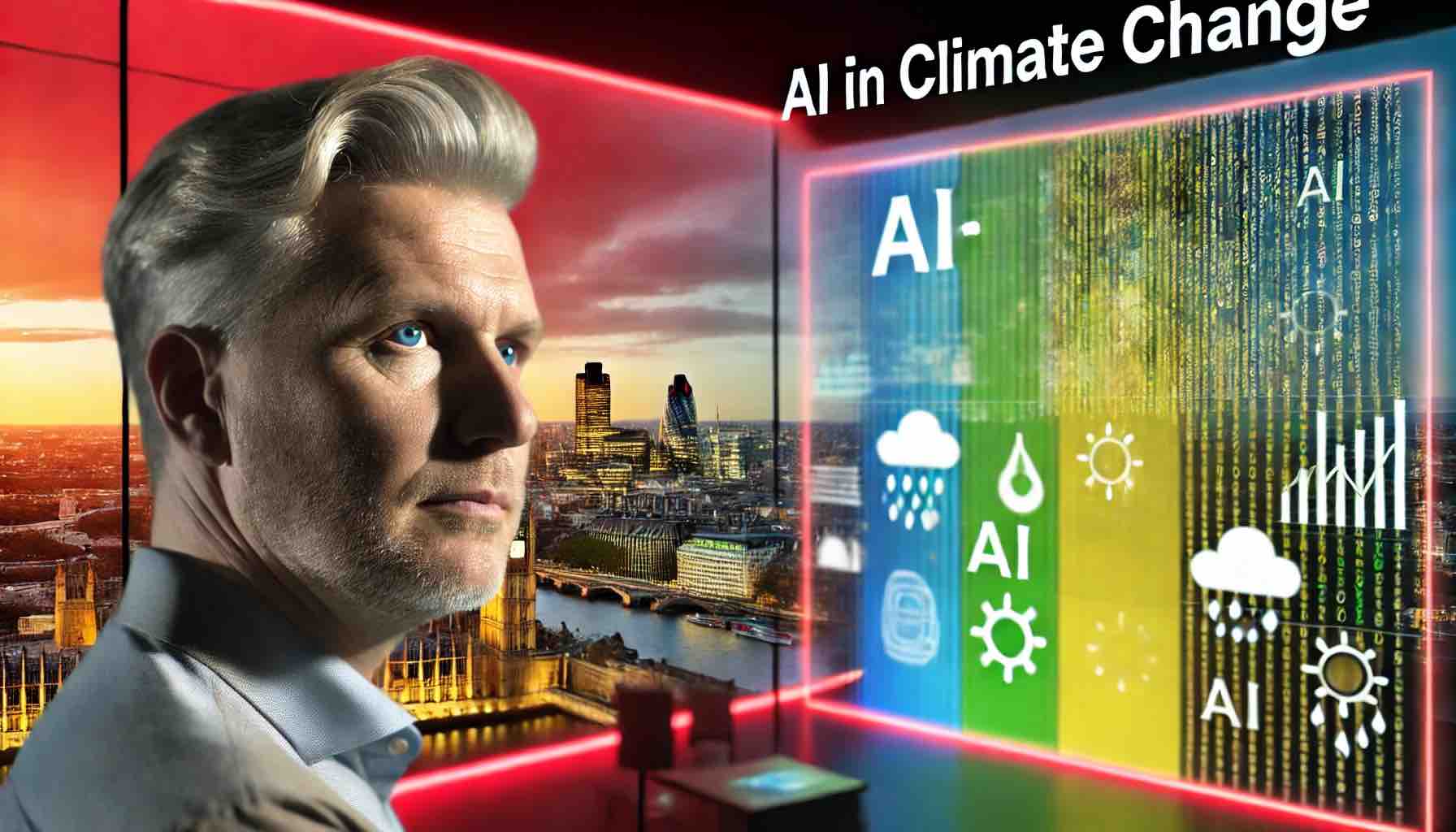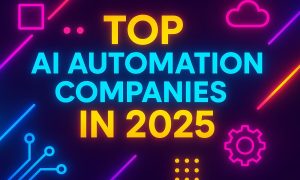

As the world grapples with the realities of climate change, artificial intelligence (AI) is emerging as a powerful tool in climate tech, mitigation, and adaptation. AI is being used to develop solutions that reduce greenhouse gas emissions, optimize energy systems, predict environmental changes, and help cities and communities adapt to climate challenges. In London, the UK, Europe, and the USA, AI is helping tackle these pressing issues from 2024 to 2030. This article will examine AI’s applications in climate tech, climate mitigation, and adaptation strategies across these regions.
1. AI in Climate Tech Solutions for Carbon Reduction
AI is playing an essential role in the development of climate tech solutions that reduce carbon emissions. One major area is the optimization of energy systems, which helps reduce waste and improve efficiency.

- Energy System Optimization in the UK: AI is being used to create smart energy grids in the UK, improving energy distribution efficiency and reducing waste. Companies like DeepMind (a subsidiary of Alphabet) are applying AI algorithms to the UK’s National Grid, helping manage energy loads and predict consumption peaks. By doing so, they can optimize energy distribution and reduce the reliance on fossil fuels during peak times【7†source】.
- AI in Renewable Energy in Europe: In Europe, AI is helping maximize the output of renewable energy sources like wind and solar. For instance, wind farms are using AI to predict wind patterns and adjust turbines in real-time for optimal performance. AI-powered predictive analytics are improving energy efficiency and accelerating the shift towards renewable energy【8†source】.
- Smart Buildings in the USA: In the USA, AI is being employed in smart building technologies. AI systems integrated with Internet of Things (IoT) sensors monitor energy consumption and automatically adjust heating, ventilation, and air conditioning systems based on real-time data. Companies like Honeywell and IBM are leading the way in creating AI-powered solutions that improve energy efficiency and reduce carbon footprints【9†source】.
2. AI for Climate Mitigation
Climate mitigation refers to efforts aimed at reducing the severity of climate change by lowering greenhouse gas emissions and enhancing carbon sinks. AI is critical in scaling these efforts.

- Carbon Capture in the UK: AI-driven innovations are being used in carbon capture and storage (CCS) technologies in the UK. AI helps monitor CO2 levels in the atmosphere and optimizes the capture process. Companies like Carbon Clean are integrating AI into their CCS processes to improve efficiency and reduce costs【7†source】.
- Forest Conservation in Europe: In Europe, AI is being used for reforestation and forest conservation projects. AI-powered drones and satellite imagery analyze large-scale deforestation data, allowing environmental organizations to monitor the health of forests and quickly address illegal logging. Startups like Pachama are leveraging AI to help conserve forest ecosystems by measuring carbon sequestration in real-time【8†source】.
- Transportation Efficiency in the USA: AI is transforming the transportation sector in the USA by making it more energy-efficient. AI is being used to optimize traffic flows in urban areas and reduce emissions from vehicles. AI-powered solutions like autonomous vehicles and smart traffic systems are helping reduce congestion, lower fuel consumption, and cut greenhouse gas emissions【9†source】.
3. AI in Climate Adaptation Strategies
While mitigation focuses on reducing emissions, climate adaptation involves adjusting to the already present effects of climate change. AI is helping cities, industries, and communities better adapt to rising temperatures, sea levels, and extreme weather patterns.

- Flood Risk Management in the UK: In the UK, AI is playing a key role in flood risk management. AI models use historical data, satellite imagery, and real-time weather data to predict flood risks and help local governments implement proactive measures. The Flood AI platform, developed by the UK-based company Previsico, is helping regions predict and mitigate flood risks【7†source】.
- Heatwave Prediction in Europe: In Southern Europe, which is particularly vulnerable to heatwaves, AI models are being used to predict extreme weather events and prepare cities for their impact. AI helps simulate heatwave scenarios, providing crucial insights for urban planners to create heat-resilient infrastructure. These technologies enable more accurate predictions of the impact of extreme weather on vulnerable populations【8†source】.
- Wildfire Detection in the USA: In the USA, AI is being utilized to predict and detect wildfires. AI-powered drones and satellites are deployed to monitor forests and areas at risk of wildfires. Companies like Descartes Labs are using AI to analyze satellite imagery and detect early signs of wildfires, allowing authorities to respond quickly and prevent widespread destruction【9†source】.
4. AI-Powered Climate Data and Predictive Analytics
The ability to predict environmental changes with high accuracy is critical in the fight against climate change. AI-powered data analytics tools are making this possible by processing vast amounts of climate data and creating predictive models.

- Climate Data Analysis in London: London’s environmental data platforms use AI to collect and analyze data on air quality, pollution levels, and temperature variations. By leveraging AI, these platforms help predict changes in the urban environment and offer real-time suggestions for mitigating the impact on citizens. Startups like Plume Labs are using AI to provide air quality forecasts that empower individuals and governments to take action【7†source】.
- Predictive Modeling in Europe: In Europe, AI is being used for predictive climate modeling to understand the future impact of climate change on agriculture, water resources, and biodiversity. Researchers are using AI to model climate scenarios and assess the risks posed by rising sea levels, droughts, and extreme temperatures. These AI-driven insights are vital for long-term planning and policy development【8†source】.
- Climate Resilience in the USA: In the USA, AI is used to model the resilience of infrastructure to climate change. AI-powered simulations provide insights into how infrastructure such as roads, bridges, and power grids will respond to extreme weather events, helping governments prepare for future challenges. Companies like ClimateAI are offering predictive climate analytics to help organizations build more resilient supply chains and infrastructure【9†source】.
5. AI in Agriculture and Food Security
Agriculture is one of the sectors most vulnerable to climate change. AI is playing a significant role in helping farmers adapt to changing climate conditions and ensuring food security.

- Precision Agriculture in the UK: In the UK, AI-driven precision agriculture is becoming a game-changer for farmers. AI systems use data from drones and IoT sensors to monitor soil conditions, moisture levels, and crop health, helping farmers make informed decisions on irrigation and fertilization. Companies like Hummingbird Technologies are leading the way in AI-powered precision farming【7†source】.
- Crop Yield Prediction in Europe: European farmers are using AI to predict crop yields and adapt to changing climate conditions. AI models analyze historical data and real-time weather conditions to forecast crop performance, allowing farmers to optimize planting and harvesting schedules. In countries like France and Spain, AI is helping farmers mitigate the risks associated with unpredictable climate patterns【8†source】.
- Water Management in the USA: In regions of the USA that face droughts and water scarcity, AI is being used to manage water resources efficiently. AI-powered irrigation systems monitor soil moisture and weather forecasts, automatically adjusting water usage to minimize waste. Companies like The Climate Corporation are providing farmers with AI solutions that improve water efficiency and enhance crop resilience【9†source】.
6. AI in Climate Policy and Environmental Governance
AI is also being used to assist governments in creating more effective climate policies and improving environmental governance. AI-driven platforms help policymakers design, implement, and monitor climate initiatives more efficiently.

- AI in Climate Legislation in the UK: In the UK, AI tools are helping the government track and enforce environmental regulations. AI systems are used to monitor pollution levels, track carbon emissions, and ensure compliance with environmental policies. The UK government’s partnership with AI-driven platforms like ClimateTrace helps monitor emissions from various industries in real time【7†source】.
- Environmental Compliance in Europe: In Europe, AI is helping governments enforce compliance with environmental regulations. By monitoring industrial emissions and pollution, AI systems ensure that companies adhere to stringent environmental standards. These technologies are helping the EU meet its climate goals, such as those outlined in the European Green Deal【8†source】.
- Carbon Pricing in the USA: In the USA, AI is being used to develop carbon pricing models that incentivize companies to reduce emissions. AI-powered platforms analyze data on carbon emissions, market conditions, and energy usage to create dynamic pricing models that encourage sustainable practices. These tools are vital for designing effective policies that address the economic and environmental impact of climate change【9†source】.
Conclusion
AI is becoming a crucial player in the global fight against climate change. From optimizing energy systems and reducing carbon emissions to improving climate adaptation strategies, AI is transforming how cities, industries, and governments approach climate tech and sustainability. The role of AI in climate mitigation and adaptation is expected to grow exponentially between 2024 and 2030, particularly in regions like London, the UK, Europe, and the USA. As AI technologies continue to evolve, their potential to drive meaningful climate action is becoming increasingly clear.
References
- Financial Times. “AI in Climate Tech and Sustainability.” Financial Times
- Bloomberg. “Artificial Intelligence in Climate Mitigation: Current Trends and Future Prospects.” Bloomberg
- CNN. “How AI is Helping Fight Climate Change.” CNN























